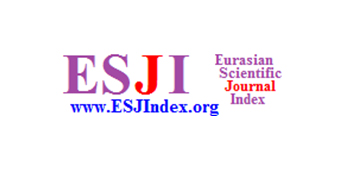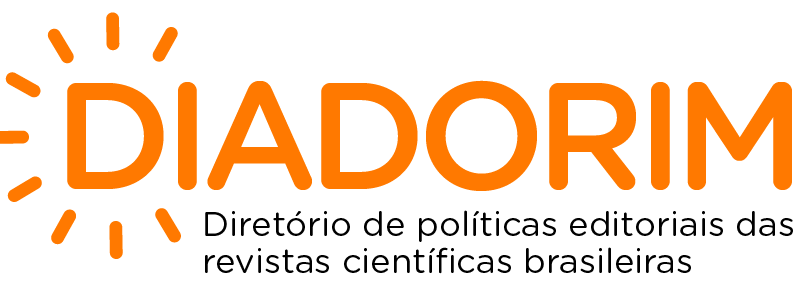Number and the Count/mass Distinction in Kaingang
DOI:
https://doi.org/10.5433/2237-4876.2022v25n3p66Keywords:
Kaingang, numerals, quantifiers, count/mass, distinction, reduplication, suppletionAbstract
This paper presents a preliminary description of the count/mass distinction in Kaingang, a Jê language spoken in southern Brazil. First, we show that there is no plural morphological marker for nouns. We show that morphological processes in verbs (suppletion, reduplication, prefixation of the morpheme kyg-) can express plurality of events (iterativity) and pluralization of verbal arguments. Second, we show that constructions with numerals and quantifiers can be used to distinguish count from mass nouns in Kaingang. Count nouns can be combined directly with numerals whereas mass nouns require a counting/measuring unit in these constructions. Likewise, count nouns occur with the count-quantifier ’e ‘many’ with a cardinal interpretation, whereas mass nouns occur with the quantifier mág ‘a lot’ with a volume interpretation. We also show that some mass nouns, in contexts where the counting/measuring unit is salient, can be directly combined with numerals/count quantifiers.
Downloads
References
BARDAGIL, Bernat. Number morphology in Panará. Linguistic Variation, Amsterdam, v. 20, n. 2, p. 312-323, DOI: https://doi.org/10.1075/lv.00023.bar
CHIERCHIA, Gennaro. Mass nouns, vagueness and semantic variation. Synthese, Netherlands, v. 174, n. 1,
p. 99-149, 2010. Disponível em: https://doi.org/10.1007/s11229-009-9686-6. Acesso em: 30 maio 2022. DOI: https://doi.org/10.1007/s11229-009-9686-6
CHIERCHIA, Gennaro. Reference to kinds across language. Natural Language Semantics, Netherlands, v. 6,
n. 4, p. 339-405, 1998. Disponível em: https://doi.org/10.1023/A:1008324218506. Acesso em: 20 maio DOI: https://doi.org/10.1023/A:1008324218506
D’ANGELIS, Wilmar da Rocha. Concordância verbal de número em Kaingáng: algumas pistas. Liames,
Campinas, v. 4, p. 71-81, 2004. DOI: https://doi.org/10.1002/bate.200490015
DAMULAKIS, Gean Nunes; NASCIMENTO, Marcia. Count, mass, and number in Kaingang.
In: A TYPOLOGY OF COUNT, MASS AND NUMBER IN BRAZILIAN LANGUAGES, 1., 2017,
Rio de Janeiro. Workshop […]. Rio de Janeiro: Museu do Índio, 2017.
DOETJES, Jenny Sandra. Quantifiers and selection: on the distribution of quantifying expressions in French,
Dutch and English. Leiden: The Hague, 1997.
FRISSON, Steven; FRAZIER, Lyn. Carving up word meaning: portioning and grinding. Journal of Memory and
Language, New York, v. 53, n. 2, p. 277-291, 2005. DOI: https://doi.org/10.1016/j.jml.2005.03.004
IBGE - INSTITUTO BRASILEIRO DE GEOGRAFIA E ESTATÍSTICA. Censo demográfico. Rio de Janeiro:
IBGE, 2010.
LIMA, Suzi; ROTHSTEIN, Susan. A typology of the mass/count distinction in Brazil and its relevance for
mass/count theories. Linguistic Variation, Amsterdam, v. 20, n. 2, p. 174-218, 2020. DOI: https://doi.org/10.1075/lv.00015.lim
LIRA, Ingryd Moraes de Moraes; FERREIRA, Marília de Nazaré de Oliveira. Descrição de nomes contáveis
e massivos em Parkatejê. Liames, Campinas, v. 21, p. 1-19, 2021.
MATHIEU, Eric. On the mass/count distinction in Ojibwe. In: MASSAM, D. (ed.). Count and mass across
languages. Oxford: Oxford University Press, 2012. p. 172-198.
MÜLLER, Ana; STORTO, Luciana; COUTINHO-SILVA, Thiago. Number and the mass/count distinction
in Karitiana. In: WORKSHOP ON STRUCTURE AND CONSTITUENCY IN LANGUAGES OF THE
AMERICAS, 11., 2006, Vancouver. Proceedings […]. Vancouver: UBC, 2006. p. 122-135.
NASCIMENTO, Marcia. Evidencialidade em Kaingang: descrição, processamento e aquisição. 2017. 184 f. Tese
(Doutorado em Linguística) - Universidade Federal do Rio de Janeiro, Rio de Janeiro, 2017.
NEVINS, Andrew; SILVA, Mario Coelho. Maxakalí has suppletion, numerals and associatives, but no plurals.
Linguistic Variation, Amsterdam, v. 20, p. 2, p. 271-287, 2020. DOI: https://doi.org/10.1075/lv.00020.nev
PELLETIER, Francis Jeffry. Lexical nouns are both +mass and +count, but they are neither +mass nor
+count. In: MASSAM, D. (ed.). Count and mass across languages. Oxford: Oxford University Press, 2012. p. 9-26. DOI: https://doi.org/10.1093/acprof:oso/9780199654277.001.0001
PELLETIER, Francis Jeffry. Non-singular reference: some preliminaries. Philosophia, Netherlands, v. 5, n. 4, DOI: https://doi.org/10.1007/BF02379268
p. 451-65, 1975.
RODRIGUES, Aryon Dall’Igna. Línguas brasileiras: para o conhecimento das línguas indígenas. São Paulo:
Loyola, 1986.
ROTHSTEIN, Susan. Semantics for counting and measuring. Cambridge: Cambridge University Press, 2017. DOI: https://doi.org/10.1017/9780511734830
SALANOVA, Andrés Pablo. Counting and measuring in Mẽbengokre and the count/mass distinction.
Linguistic Variation, Amsterdam, v. 20, n. 2, p. 300-311, 2020. DOI: https://doi.org/10.1075/lv.00022.sal
WIESE, Heike; MALING, Joan. Beers, kaffi, and schnapps – different grammatical options for ‘restaurant
talk’ coercions in three germanic languages. Journal of Germanic Linguistics, Cambridge, v. 17, n. 1, p. 1-38, 2005.
WIESEMANN, Ursula Gojtéj. Introdução na língua Kaingang. Rio de Janeiro: Summer Institute of Linguistics,
WIESEMANN, Ursula Gojtéj. Kaingang-Português: dicionário bilíngue. Curitiba: Editora Evangélica Esperança,
WILHELM, Andrea. Bare nouns and number in Dëne Sųłiné. Natural Language Semantics, Netherlands, v. 16, DOI: https://doi.org/10.1007/s11050-007-9024-9
p. 39-68, 2008.
Downloads
Published
How to Cite
Issue
Section
License
Copyright (c) 2023 Signum: Estudos da Linguagem

This work is licensed under a Creative Commons Attribution-NonCommercial-NoDerivatives 4.0 International License.
This journal reserves the right to make, in the originals, normative, orthographic and grammatical modifications in order to maintain the standard language and the credibility of the publication. It will respect, however, the authors’ style of writing. Modifications, corrections and suggestions of conceptual order will be forwarded to the authors, if necessary. In these cases, the papers, once appropriate, should be submitted to a new appreciation. The final examinations will not be forwarded to the authors. Works published become property of Signum, being its total or partial reprint subject to an explicit authorization of the journal. In all subsequent quotes the original source of publication should be mentioned, in case, in Photographic Discourse. Opinions emitted by the authors are their exclusive responsibility.

















